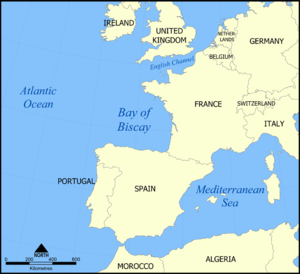| Operation Turkey Buzzard / Beggar | |||||||
|---|---|---|---|---|---|---|---|
 Area of the operation | |||||||
| |||||||
| Belligerents | |||||||
|
|
| ||||||
| Units involved | |||||||
|
No. 2 Wing, GPR No. 295 Squadron RAF | Focke-Wulf Fw 200 | ||||||
| Casualties and losses | |||||||
|
3 Handley Page Halifax with 21 aircrew 5 Airspeed Horsa with 7 aircrew | None | ||||||
| 13 RAF aircrew were killed training for the mission | |||||||
Operation Turkey Buzzard, also known as Operation Beggar, was a British supply mission to North Africa that took place between March and August 1943, during the Second World War. The mission was undertaken by No. 2 Wing, Glider Pilot Regiment and No. 295 Squadron Royal Air Force, prior to the Allied invasion of Sicily. Unusually, the mission was known by different names in different branches of the British Armed Forces: the British Army called the operation "Turkey Buzzard", while in the Royal Air Force it was known as "Beggar".[1]
The mission involved Royal Air Force Handley Page Halifax bombers towing Airspeed Horsa gliders 3,200 miles (5,100 km) from England to Tunisia. The British Horsas were needed to complement the smaller American Waco gliders, which did not have the capacity required for the operations planned by the 1st Airborne Division.
During the mission one Halifax-and-Horsa combination was shot down by German Focke-Wulf Fw 200 Condor long-range patrol aircraft. Altogether five Horsas and three Halifaxes were lost, but twenty-seven Horsas arrived in Tunisia in time to participate in the invasion of Sicily. Although this supply operation was a success, few of the gliders made it to their landing zones in Sicily during the two British airborne operations that followed, many becoming casualties of the weather conditions or anti-aircraft gunfire.
- ^ Peters, Mike. "Staff Sergeant Mike Hall's experience of Operation Turkey-Buzzard and exercises prior to the invasion of Sicily". Paradata. Archived from the original on 18 March 2012. Retrieved 3 July 2011.
The RAF codenamed the glider delivery mission as Operation Beggar, the GPR came up with the very apt 'Operation Turkey-Buzzard'.